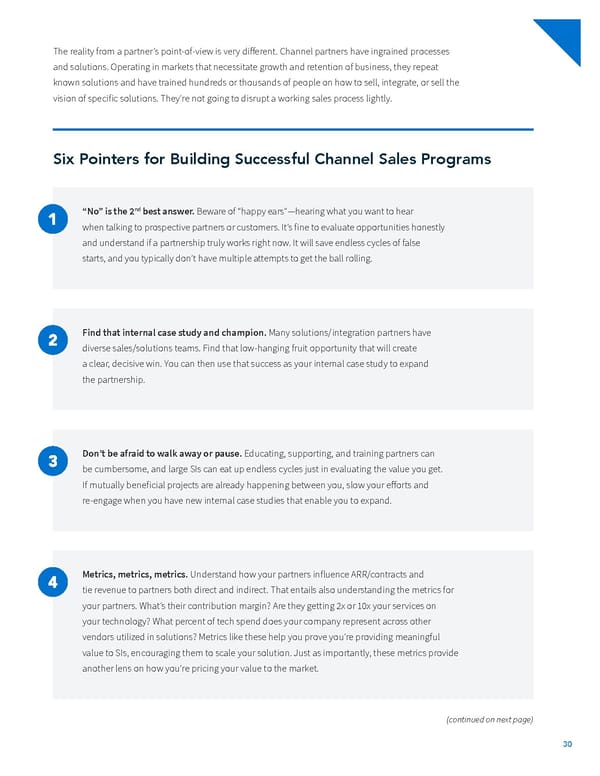The reality from a partner’s point-of-view is very different. Channel partners have ingrained processes and solutions. Operating in markets that necessitate growth and retention of business, they repeat known solutions and have trained hundreds or thousands of people on how to sell, integrate, or sell the vision of speciifc solutions. They’re not going to disrupt a working sales process lightly. Six Pointers for Building Successful Channel Sales Programs “No” is the 2 nd best answer. Beware of “happy ears”—hearing what you want to hear when talking to prospective partners or customers. It’s ifne to evaluate opportunities honestly and understand if a partnership truly works right now. It will save endless cycles of false starts, and you typically don’t have multiple attempts to get the ball rolling. Find that internal case study and champion. Many solutions/integration partners have diverse sales/solutions teams. Find that low-hanging fruit opportunity that will create a clear, decisive win. You can then use that success as your internal case study to expand the partnership. Don’t be afraid to walk away or pause. Educating, supporting, and training partners can be cumbersome, and large SIs can eat up endless cycles just in evaluating the value you get. If mutually beneifcial projects are already happening between you, slow your efforts and re-engage when you have new internal case studies that enable you to expand. Metrics, metrics, metrics. Understand how your partners inlfuence ARR/contracts and tie revenue to partners both direct and indirect. That entails also understanding the metrics for your partners. What’s their contribution margin? Are they getting 2x or 10x your services on your technology? What percent of tech spend does your company represent across other vendors utilized in solutions? Metrics like these help you prove you’re providing meaningful value to SIs, encouraging them to scale your solution. Just as importantly, these metrics provide another lens on how you’re pricing your value to the market. (continued on next page) 30
 Guide to Breaking into the Enterprise Market Page 29 Page 31
Guide to Breaking into the Enterprise Market Page 29 Page 31